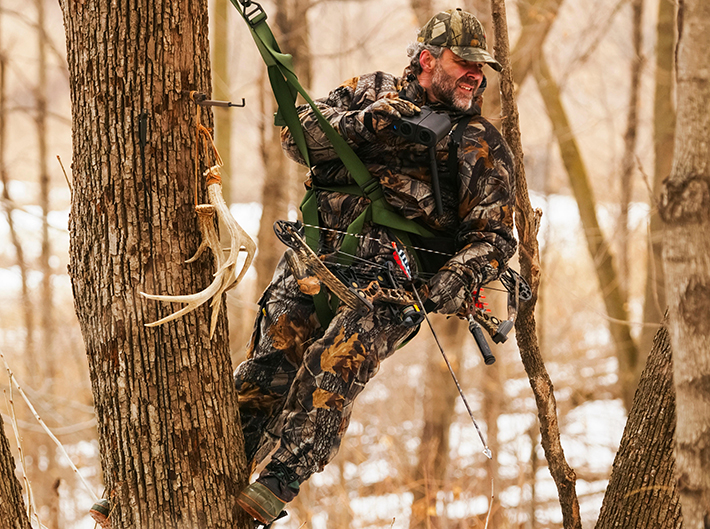
Standards for Safer Hunting
Treestands have been used by hunters for decades. These elevated platforms are secured to trees to elevate the hunter above the forest floor, generally out of view of their prey, to provide them with a better vantage point.
But treestands are heavy, take quite a bit of time to set up and break down, and limit the range a hunter can cover on a given hunt. For those hunters who value speed and flexibility, the hunting saddle is catching on. Offering similar advantages to treestands – including an elevated perch from which to spot targets – they are also easier for a hunter to set up and break down, allowing them to move from place to place.
READ MORE: Standards Help Make the Outdoors Safer
“Treestands can be difficult to put up, make a lot of noise, and take a lot of time to install,” says John Louk, member of ASTM International’s committee on sports equipment, playing surfaces, and facilities (F08). He is also executive director of the Treestand Manufacturer's Association. “With these hunting saddles, you can find where you want to hunt and, using a minimal amount of equipment, have some means to ascend and descend the tree. The hunter puts up a stick ladder, climbs to a certain height, attaches their tether, and simply hangs there and hunts.”
Although saddle hunting has been around since the 1960s, it is only in the last several years that it has started to gain real traction. As a result, demand for hunting saddles has begun to outstrip supply. And that’s a problem, Louk says, because with saddles being a relatively low-tech device, some hunters have taken it upon themselves to make homemade versions when they can’t obtain one from a manufacturer. The result is less safety.
“I would say one of the biggest issues the industry faces is that the do-it-yourself idea is out of control. Literally, you have hunters out there who are taking full-body harnesses, cutting the shoulder straps and leg straps out of them, strapping up a rope to it, and calling it good.”
Many outdoor retailers take it upon themselves to educate hunters on the risks and technicalities associated with products such as treestands. But the direct-to-consumer market doesn’t have that layer of support, putting the onus on manufacturers.
To address the inherent risks associated with hunting saddles, committee F08 has been working with saddle manufacturers on new standards specifically focused on this part of the industry:
1) Terminology for hunting saddles (WK75936)
Given that hunting saddles are structurally and functionally different from treestands, this standard is intended to maintain uniformity of terminology for the discussion and evaluation of these types of products, particularly with regard to quality assurance and safety factors. Once enacted, it will also define terminology, defining units of measure, application loads, and performance results.
2) Test method for hunting saddle static load capacity (WK75939)
Static load refers to the amount of weight that a given saddle can support in a static position, with the hunter not moving. This test method will help manufacturers determine the static load capacity of their hunting saddles relative to their rated capacity. The intent is to provide a unique and repeatable methodology for testing a hunting saddle under static conditions.
3) Test method for hunting saddle dynamic load capacity (WK75942)
Whereas static load measures standstill weight, dynamic load is reflected in a saddle’s capacity when in motion. Experienced hunters will admit that the sport typically involves hours of sitting punctuated by fleeting seconds of vigorous activity. The hunter needs to know that their hunting saddle will support its rated capacity in these moments. This test method will allow manufacturers to test the dynamic load capabilities of their hunting saddles so consumers can fully understand the capabilities of the product.
“With treestands, retailers understand the risks,” Louk says. “So they actually require that all the products they sell be based on industry standards to cover their own liability. With hunting saddles there has been no standardization, no performance testing, and no terminology, nothing for us to be able to say a given product meets industry standards. As a result, many retailers have been declining to sell these products. Our hope is that these new standards help legitimize this part of the industry and strengthen hunting saddle manufacturers as a whole.”
Tim Sprinkle is a freelance writer based in Colorado Springs, Colorado. He has written for Yahoo, The Street, and other websites.
 SN Home
SN Home Archive
Archive Advertisers
Advertisers Masthead
Masthead RateCard
RateCard Subscribe
Subscribe Email Editor
Email Editor